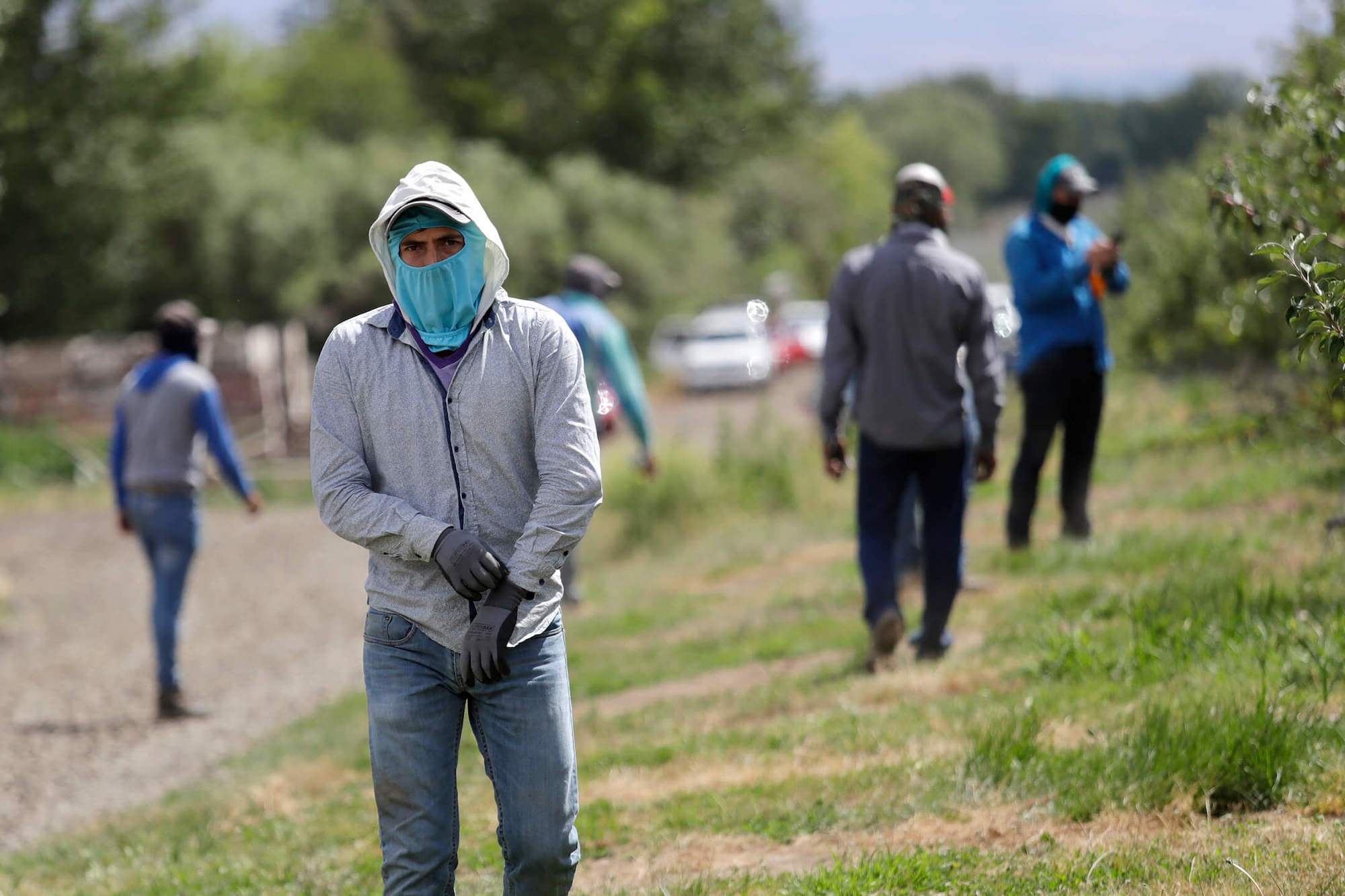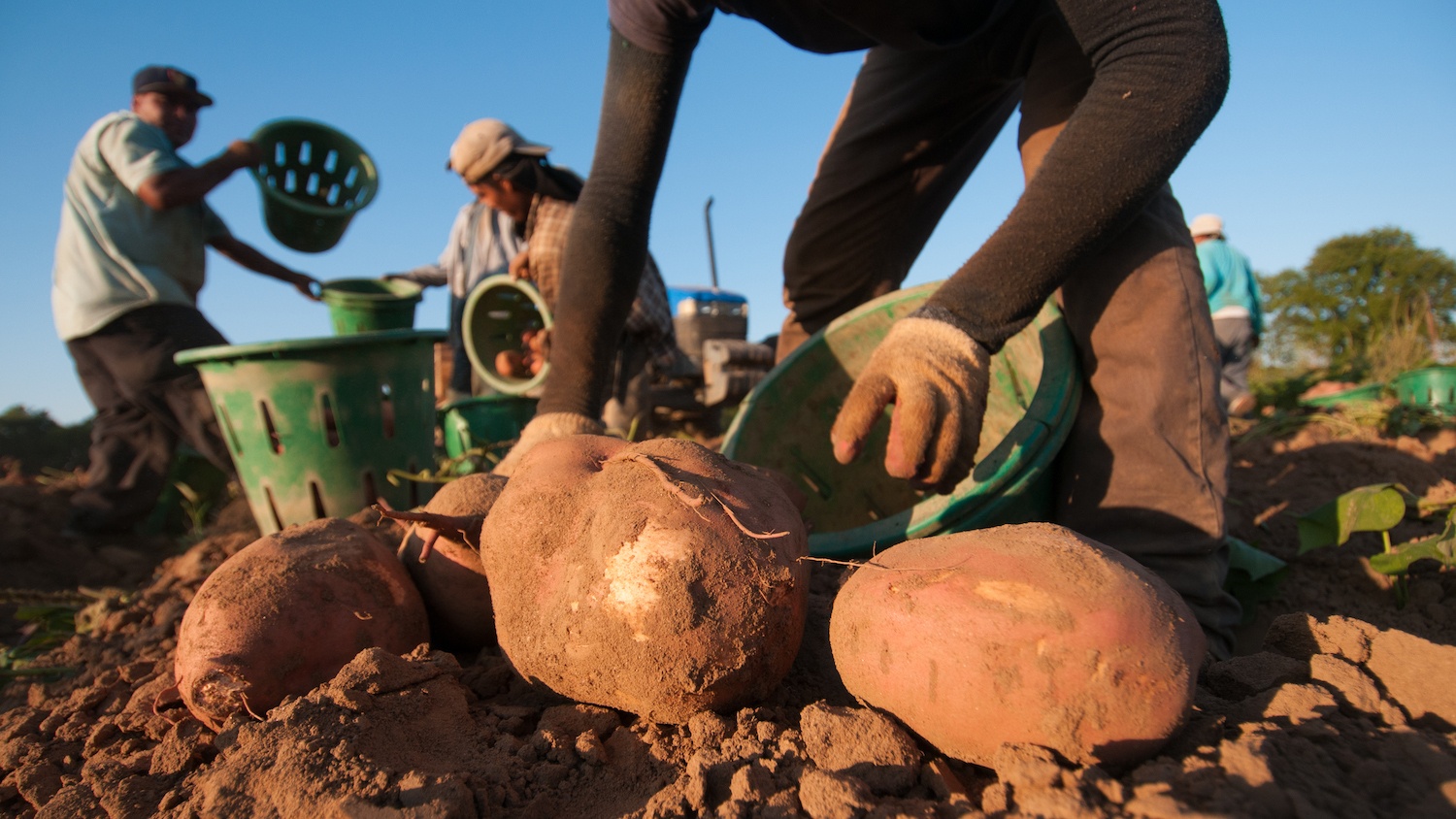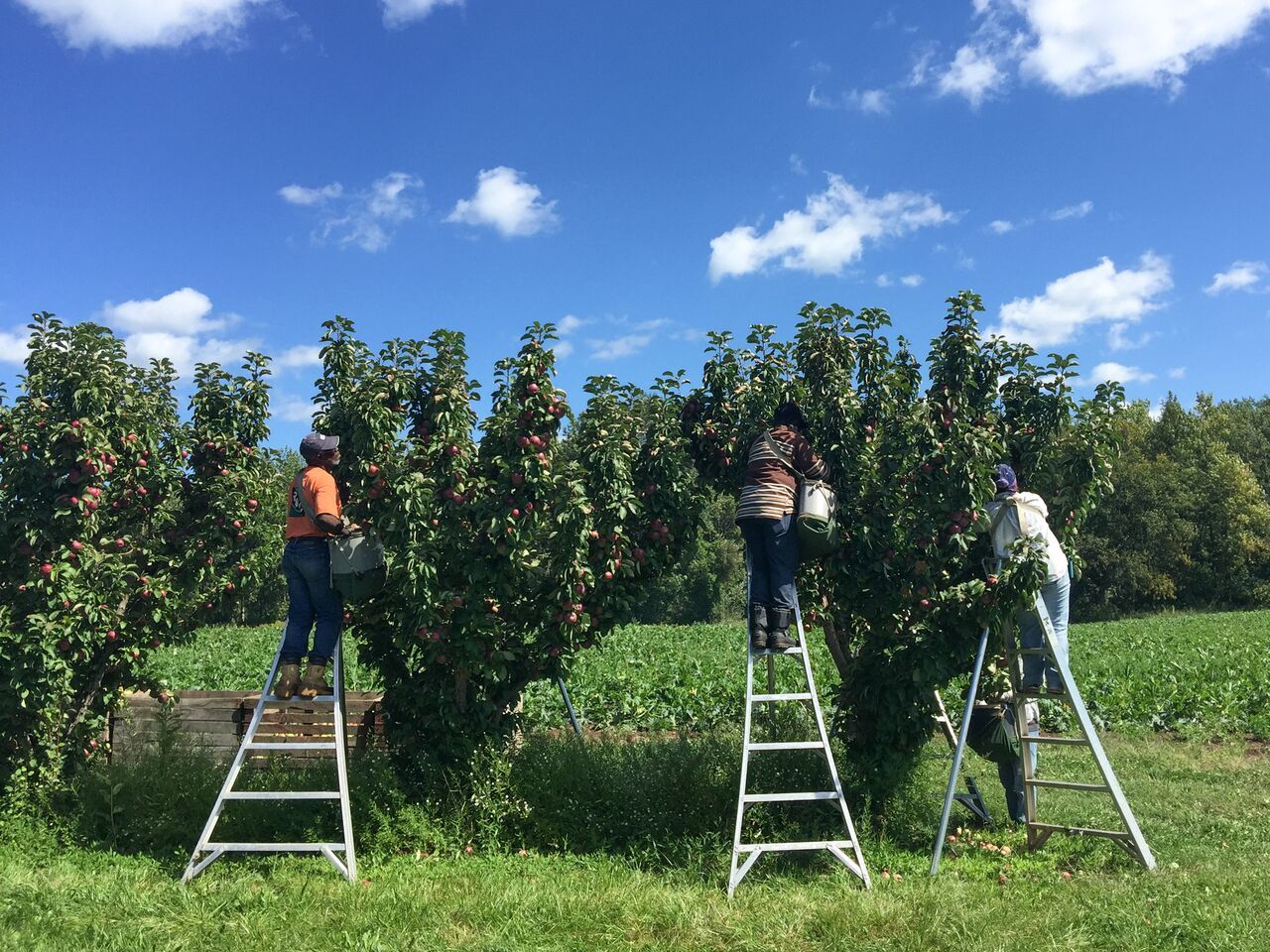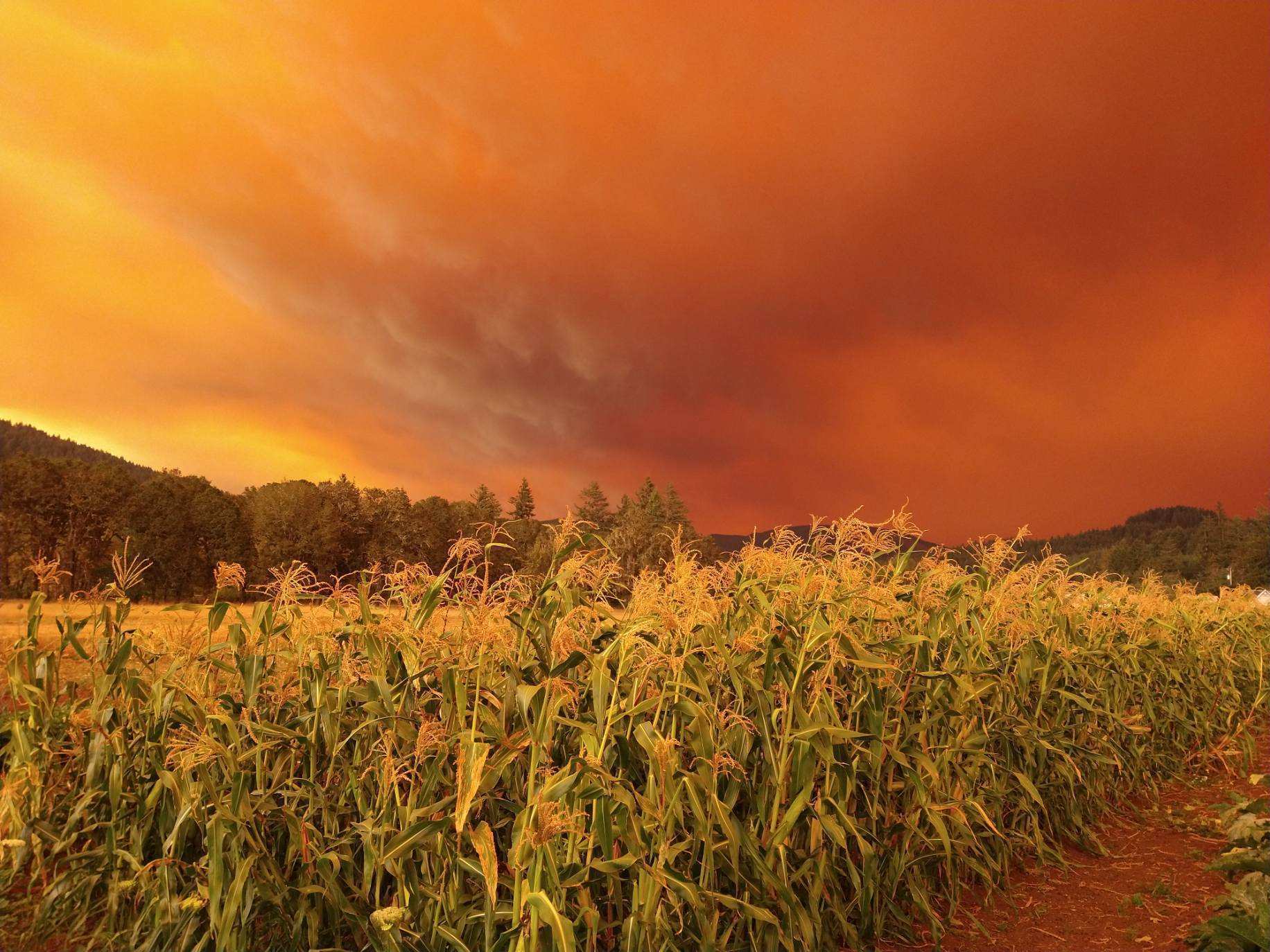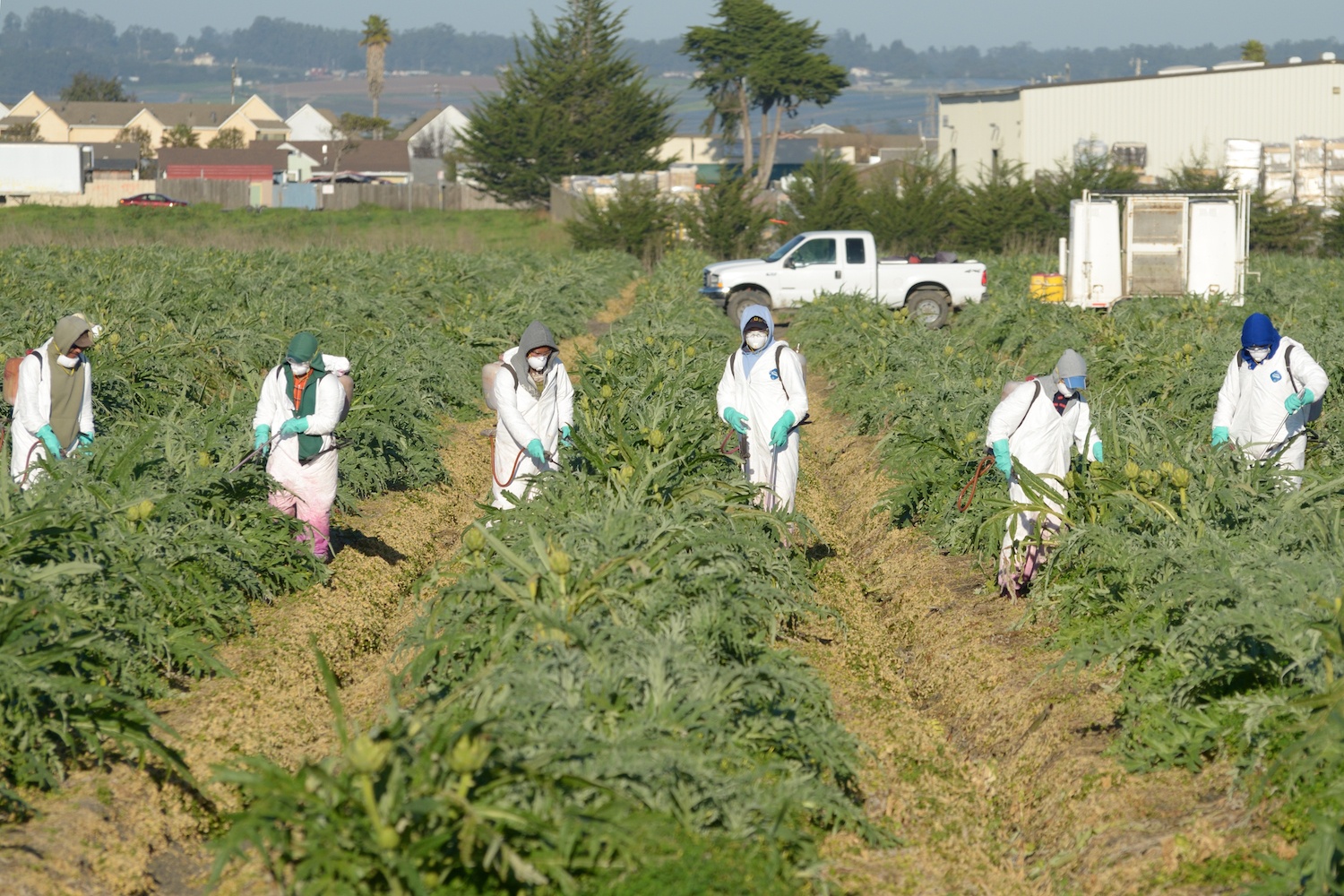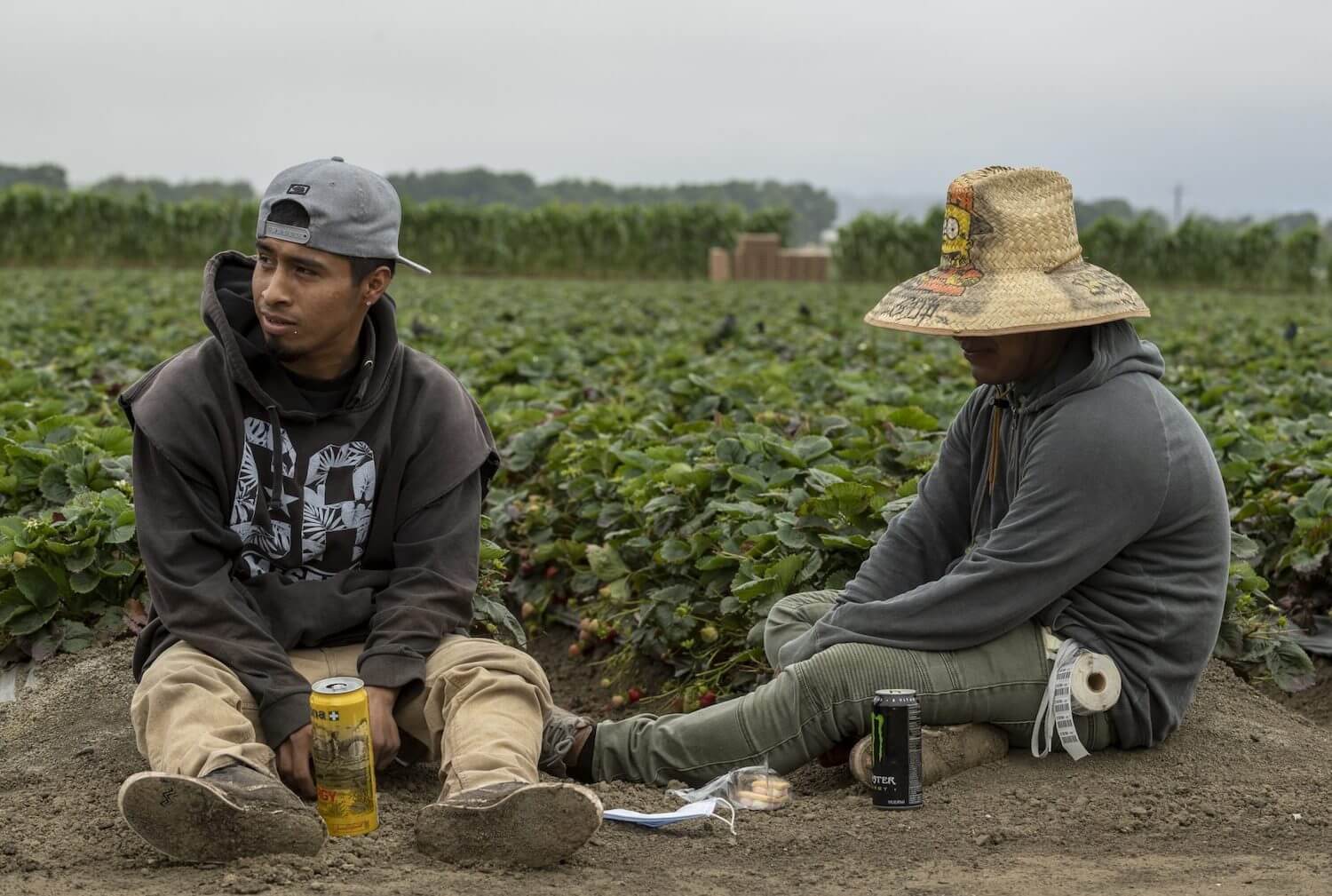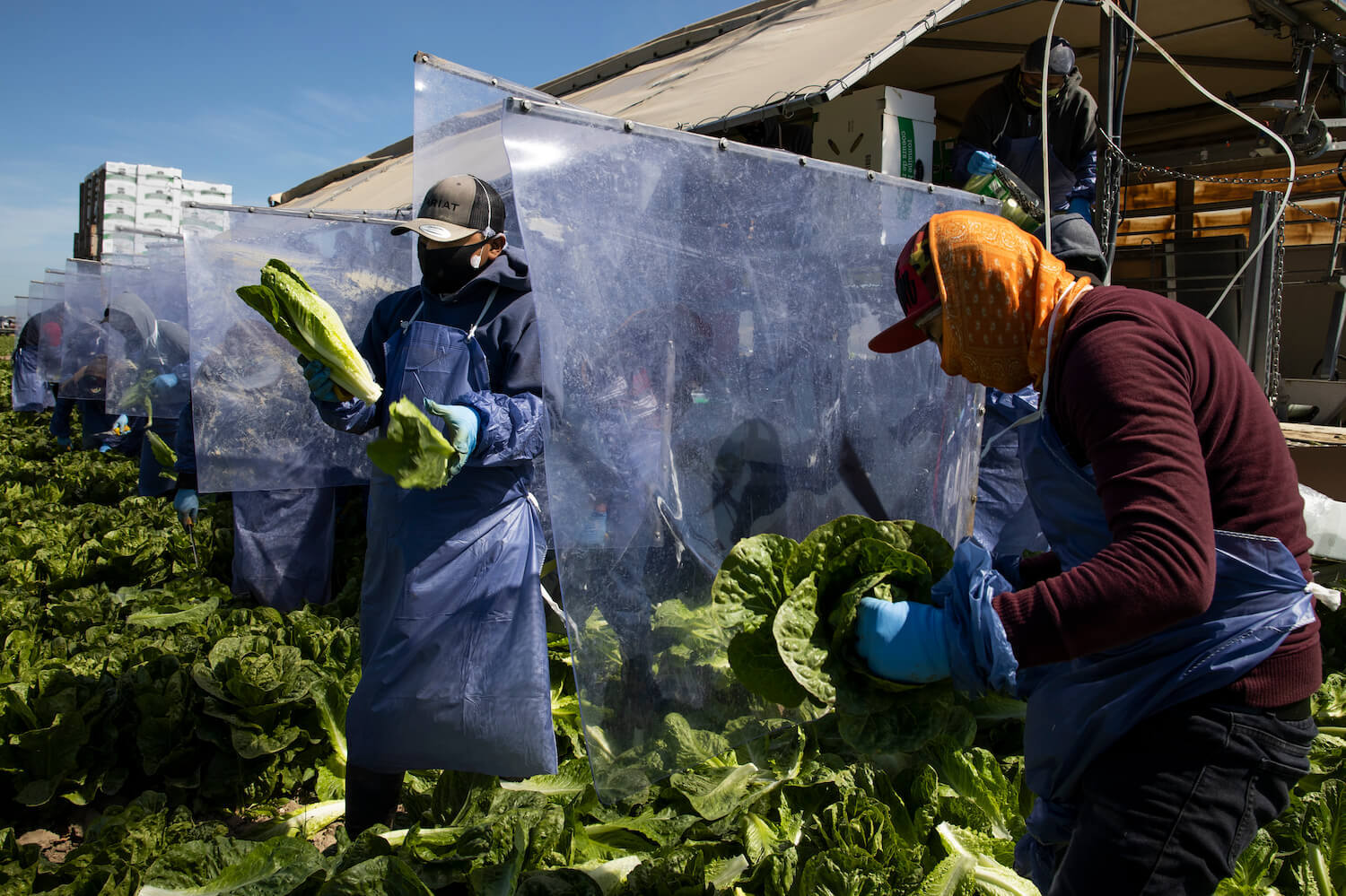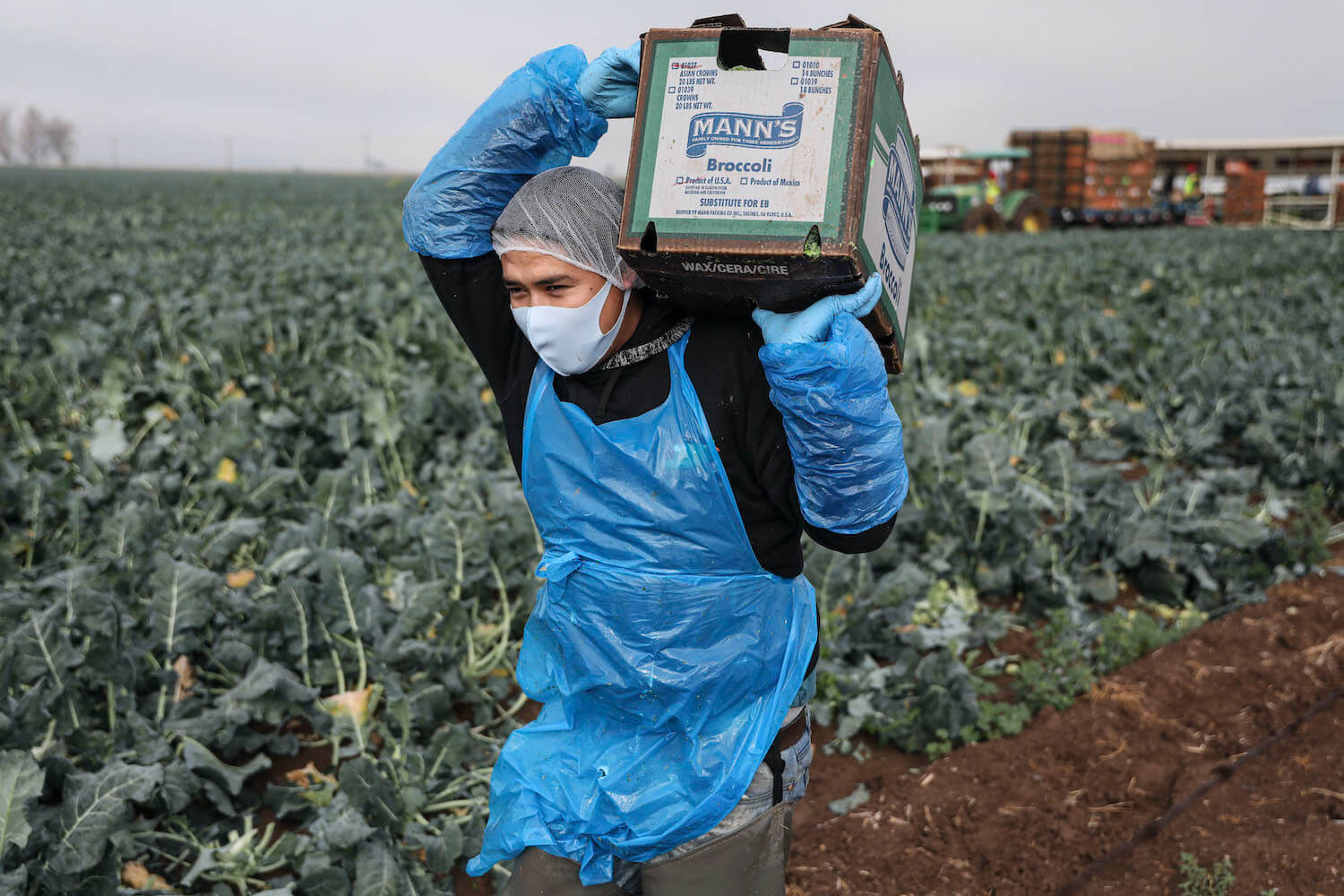
Sandy Huffaker/Getty Images
We’re all susceptible to worsened health from climate change. But for farm workers who can’t escape the weather and its effects, things are even more dire.
Research confirms the various ways that climate impacts on food and agriculture are adversely affecting our health: Rising CO2 levels lead to less nutritious crops; increased incidence of diseases and pests may cause some farmers to use more toxic on-farm chemicals; and rising temperatures can lead to upticks of bacteria in the water, making it harder to keep our irrigation-dependent food supply safe.
These threats have direct implications for every human that eats. But farm workers—who number between 2 and 3 million in the U.S., are largely undocumented, and hail mostly from Mexico and Central America—are put at even greater risk by a a host of other dangers related to working outside all day, then sleeping in subpar living situations. In fact, this past Friday, Congress took an important step in acknowledging the severity of the situation, by introducing the Asunción Valdivia Heat Illness and Fatality Prevention Act, devised to protect outdoor laborers against rising temperatures, according to the Union of Concerned Scientists.
These and other threats to farm workers aren’t necessarily new, but they “amplify existing hazards” for an already disenfranchised group, Howard Frumkin, professor emeritus of environmental and occupational health at the University of Washington School of Public Health, told The Counter. “Speaking as a physician, this set of challenges [among farm workers] has every hallmark of being an emergency.” Frumkin recently addressed these and other climate-related health concern in a presentation hosted by Climate Central.
The Asunción Valdivia Heat Illness and Fatality Prevention Act is aimed to protect outdoor laborers against rising temperatures.
Exposure to increased heat has myriad negative effects; on the milder side, these include heat rash and heat stress. But heat “can and does kill farm workers,” said Elizabeth Strater, director of strategic affairs for United Farm Workers. Pickers are often paid a piece rate, so there’s no incentive for them to slow down or take breaks when it’s hot. Last summer, when temperatures in California hit 108 degrees Fahrenheit, fast-working, piece-rate-paid celery workers “still had to be covered to protect their skin, because celery juice is phytotoxic and reacts with sun,” Strater said. Add to that the fact that many states have no shade, rest break, or potable water requirements to protect pickers, and the perils of farm work are compounded.
Additionally, workers in hot environments who don’t have steady access to clean water for rehydration are potentially at greater risk for kidney disease. NPR reported on instances of mysterious kidney failure in sugar cane cutters in Central America back in 2014. Since then, “there’s good evidence,” said Frumkin, of the role heat and dehydration play in this outcome, especially when they are combined with exposure to herbicides and other chemicals.
[Subscribe to our 2x-weekly newsletter and never miss a story.]
The effects of this exposure happen variously. Increased heat and levels of CO2 in the atmosphere give a boost to unwanted weeds. But they also render the herbicides used to battle them less effective for that purpose—potentially compelling farmers to compensate by using more of them over time. They also become more toxic to people. It’s not just new applications of chemicals that are problematic; warming weather mobilizes chemicals sitting in sinks and gets them back into circulation in the atmosphere.
“Our bodies don’t respond to just one hazard at a time.”
Another issue is how changes in rainfall patterns and heat are leading to a northward shift in crop production. This in turn is changing where migrant workers search for seasonal jobs, making their lives increasingly less routine and more uncertain. “On the face of it, this seems more socioeconomic than medical, but disrupting livelihoods is bad for health,” Frumkin said. “Migratory workers have the toughest lives but even following the harvests has had a measure of predictability over the past decades.” With conditions making it less and less clear where their next jobs will pop up, Frumkin said these workers experience the “toxic stress” that comes with precarity. Their kids suffer, too: “Lack of continuous education for migrant children is a big problem, because being less educated is a predictor of bad health,” Frumkin said.
Farm workers are also more exposed to allergens, which are becoming ever-more allergenic thanks to increased temperatures and levels of CO2; insect-borne diseases like dengue fever, which is on the rise in the U.S. and elsewhere; and upticks in ground-level ozone, which exacerbates asthma. Add to this the often “dangerous, dirty, unsafe shanties with unsanitary conditions and no good food” that await farm workers at the end of a day of hard labor, said Frumkin, and you get cumulative trauma and exposure. “Our bodies don’t respond to just one hazard at a time.”
Many farm owners “rigorously” fight against regulations that might address housing standards because providing more adequate shelter “feels expensive,” said Strater. In Washington State, for example, it’s legal to house seasonal cherry pickers in tents, “which means that these people, 24 hours a day, are exposed to the elements.”
“We need to take notice of this emergency that’s been unfolding over the course of seasons and years and decades.”
What could mitigate the seriousness of these health challenges? Strater said some state agencies are becoming more responsive to farmworker concerns, and to understand that they “need to have the resources and capacity to effectively intervene on [workers’] behalf. Even having them get their heads around the risks [farm workers face] is a start.” North Carolina hosted an estimated 72,000 migrant and seasonal farm workers in 2020. There, the NC Farmworker Health Program, along with 12 independent migrant health worker programs, provides health care via community health and outreach, giving care in the field as well as offering transportation to primary care doctors and translation services. But barriers remain, including insufficient resources, locating isolated camps, and farmer fear, according to a spokesperson.
Strater said there are farms out there that exemplify how conditions and farmworker quality of life could be significantly improved. Chateau Ste. Michelle in Washington state, for example, has been unionized since 1995 and its workers have access to paid time off and sick leave; two hours of “show up” pay when the weather is inclement; and equal representation on a safety committee. (The importance of being able to take time off when ill, without penalty, was driven home by Covid, with many farm workers compelled to work despite risks to their own and their families’ health.)
For his part, Frumkin advocates for a “revival and scaling up of the old migrant health centers, so people can get close to continuous, conventional medical care.” Such centers do exist throughout the U.S.—175 of them, in North Carolina and elsewhere, bring healthcare to frequently isolated pockets of seasonal and migrant farm workers. Frumkin would also like to see a healthcare infrastructure in which electronic medical records follow workers wherever they go, to provide continuity of care. Without concerted action in these arenas, he worries, the health challenges now being compounded by climate change are certain to have “catastrophic consequences. We need to take notice of this emergency that’s been unfolding over the course of seasons and years and decades.”

